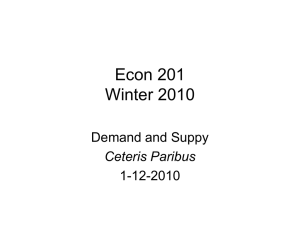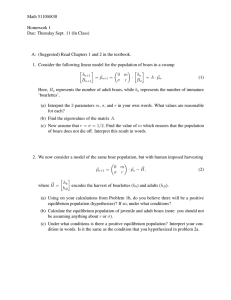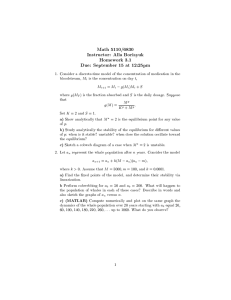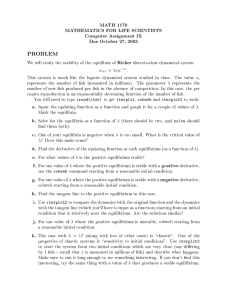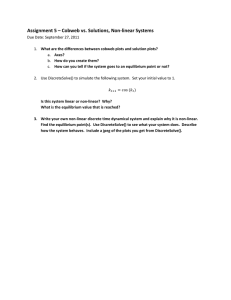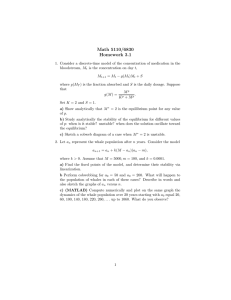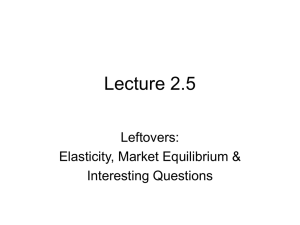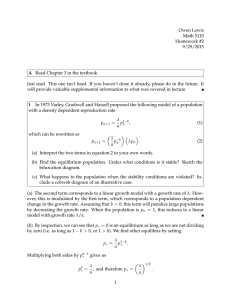Econ 100 Lecture 2.3 Supply Curves 10-7-2010
advertisement
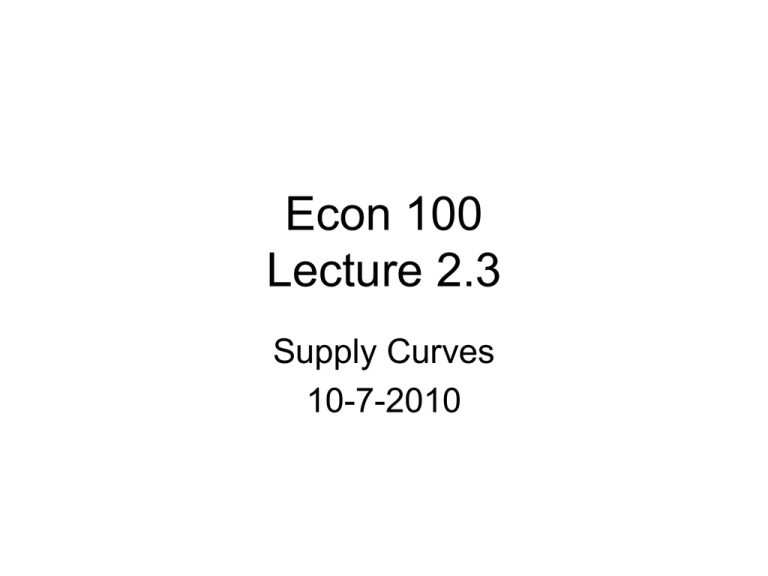
Econ 100 Lecture 2.3 Supply Curves 10-7-2010 Figure 4.8 The Individual Firm Supply Schedule and Curve Supply curve is a marginal cost (MC) curve Market Supply • The market supply curve is the horizontal sum of all the individual firm supply curves. Figure 4.9 The Supply of Coffee in the City of Burlington, Vermont The Law of Supply 5 Changes in Supply • Factors that affect the supply of a good: – Prices of inputs (such as wages) – Technology – Natural disruptions (such as bad weather) – The number of firms in the market – Expectations – Government policies Changes in Supply (cont’d) Table 4.2 Factors That Shift the Supply Curve Equilibrium • The combined forces of supply and demand in a market determine: – The quantity of a product bought and sold, and – The price per unit of the product. • The equilibrium price is the price at which: – The quantity demanded equals the quantity supplied and the market “clears.” Equilibrium (cont’d) • When a market is in equilibrium, there will be no tendency for price or quantity to change. Equilibrium (cont’d) Price (£) The Cobweb Theorem S 11 The Assume Farmers the respond falls initial £5 by equilibrium and planning farmers This In price acreates ‘divergent atomassive cobweb’ - to price increase react is by £7 cutting supply, and the plans ten quantity months for turkey 9. shortage also termed of 9 an million unstable turkeys If demand later, production. the rises, supply the months of shortage turkeys later, is and cobweb the price - Ten theis price forced tends up –to15 pushes million. supply At the the this price market level, upequilibrium. to there will £11be will per 8 and move soon away the process from continues! turkey. be million. a surplus of turkeys and the A divergent price drops. cobweb leads to price instability over time. 7 5 D 8 9 15 17 D1 Quantity Bought and Sold (millions) Cobweb Theorem • http://www.bized.co.uk/current/mind/2004_5/251004.ppt • Hungarian-born economist Nicholas Kaldor (1908-1986) • Simple dynamic model of cyclical demand with time lags between the response of production and a change in price (most often seen in agricultural sectors). • Cobweb theory is the process of adjustment in markets • Traces the path of prices and outputs in different equilibrium situations. Path resembles a cobweb with the equilibrium point at the center of the cobweb. • Sometimes referred to as the hog-cycle (after the phenomenon observed in American pig prices during the 1930s). Some Questions to Ponder 1. An early freeze destroys half of Florida’s orange crop. a) b) 2. Import quotas restrict the quantity of particular goods, e.g., large screen TVs, that can be imported from a given country a) b) 3. 4. 5. What will be the impact on the price of OJ? On the price of meals that include OJ as part of the package? What is the impact on the US market of restricting TVs imported from China? What is the impact on the US housing market of restricting “illegal” immigrants who provide construction labor? Or harvest agricultural products, like apples? How does a sales tax, e.g., 10% of the purchase price, affect the demand for those goods or services? How does a subsidy, e.g., a 10% rebate, affect the demand for those goods and services? How would a subsidy for “green energy”, e.g. biodiesel fuels, affect: a) the demand for biodiesel fuels? b) the demand for gasoline, c) the demand for corn (from which biodiesel is produced)? Seattle is considering two alternatives to the Alaska Way Viaduct. 1) A tunnel (2 lanes each way) and 2) a surface street. One proponent of the surface street option has said that it will encourage more people to use buses and reduce car travel. Is she correct? Useful Websites – Understanding differences between factors that cause shifts in demand or supply • http://hspm.sph.sc.edu/COURSES/ECON/SD/SD.h tml – Basics of demand and supply • http://www.investopedia.com/university/economics/ economics3.asp – Cobweb theorem • http://www.bized.co.uk/current/mind/2004_5/25100 4.ppt

